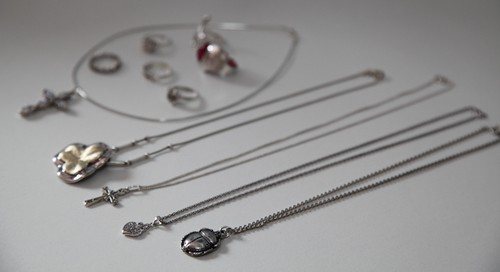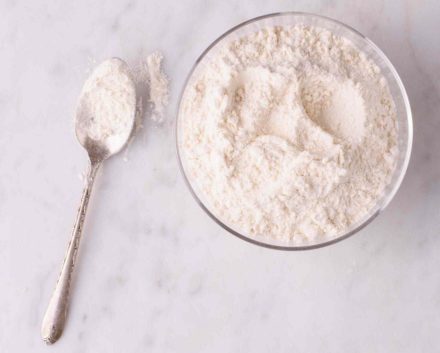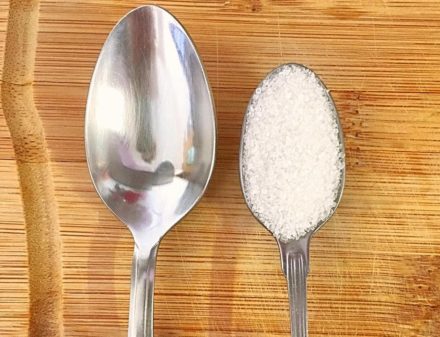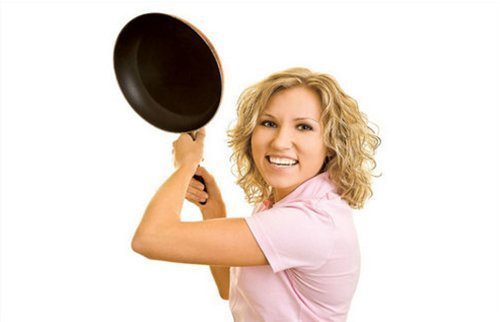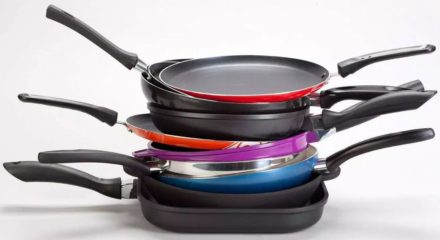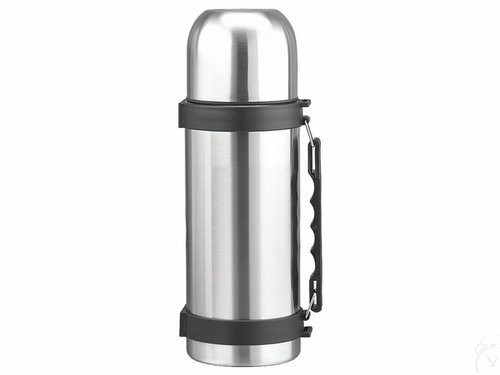Cupronickel silverware looks elegant, but only if you know how to clean cupronickel cutlery and how to store it. And for this we will understand the properties of this alloy.
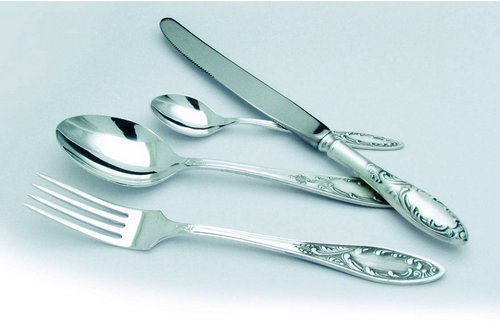
Cupronickel is a complex alloy based on red copper and nickel, which was invented before our era, but its production in its current form was established only in the 19th century, with the introduction of technology invented by the French inventors Maillot and Chaurier. It got its name in their honor. Cupronickel is an alloy of copper and nickel to which zinc, nickel and sometimes silver are added. This alloy has always been popular because it looked as impressive as silver, was not inferior to it in strength and durability, but at the same time was cheaper. Due to the fact that cupronickel is not susceptible to corrosion, it is used to make not only jewelry, but also cutlery. The only drawback of the alloy is that it can darken over time. It is impossible to wash off this plaque with a regular detergent. What is the reason for this phenomenon?
Why does cupronickel darken?
Where does the brownish residue come from that cannot destroy the soap? This darkening is called patina and is not caused by dirt. The appearance of patina is associated with oxidation of the metal upon contact with air. And this is a natural process. High humidity accelerates it. Then stains and dark spots appear on the nickel silver. Without proper care and cleaning, the alloy quickly darkens.
How to use ready-made products?
Cleaning any products made from cupronickel alloy is no different from caring for silver products. First, cupronickel spoons and forks are washed in the same way as usual - with a sponge (but not hard) dipped in a soap solution. This degreases their surface and removes dirty deposits.
Hardware and jewelry stores sell special paste and wet wipes designed for cleaning silver and cupronickel items. If the cutlery design involves many complex decorative details, purchase a special cleaning liquid. It helps restore the original shine in the curls of the decorative pattern, where it is difficult to reach with a brush.
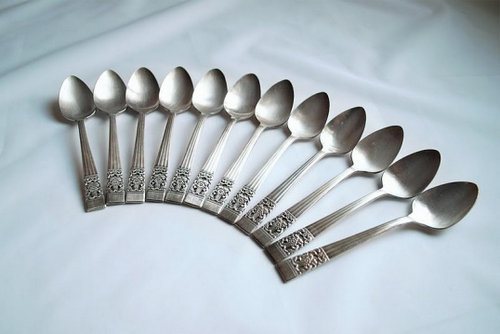
Do-it-yourself restorer for cupronickel
The composition for cleaning cupronickel can also be made at home. To do this, you need one component - sodium thiosulfate, which is sold in pharmacies. It is diluted with water, using three times as much water per part of the substance. A cotton swab is soaked in this solution, the surfaces of knives, spoons and forks are treated and left for several minutes so that the solution reacts with the metal. After this, the products are washed with soapy water and thoroughly wiped with a napkin. To do this, use a soft cotton cloth or microfiber.
Traditional methods, time-tested
Traditional methods are also used to clean cupronickel. There is a list of ingredients used to clean this alloy:
- table salt and baking soda,
- ammonia,
- toothpaste without abrasive particles,
- garlic peel,
- chalk,
- eggshell,
- potato.
Let's consider the first option.A sheet of food foil is placed at the bottom of the enamel container, cutlery is laid on top and hot water is poured over it. Then add baking soda and salt in equal proportions (take a tablespoon of both for each liter of water). The container is placed on the fire and boiled for 10-15 minutes, after which it is removed and the water is allowed to cool. Cutlery is removed and wiped dry with a flannel cloth. This helps restore them to their former shine. This method is not used for gold-plated products.
If the contamination is not severe, you can use a simpler method. Cupronickel silver cutlery is placed in hot water, in which potatoes were previously boiled, and left overnight. In the morning there will be no stains on their surface. A soda solution will also cope with light contamination. Take about 50 g of baking soda per liter of warm water and dissolve it. Then the cutlery is washed with this mixture and rinsed in cold water. If the surface has darkened slightly, crushed chalk, which is used to wipe the surface of the devices, will help. But its particles must be very small, otherwise they will scratch the surface.
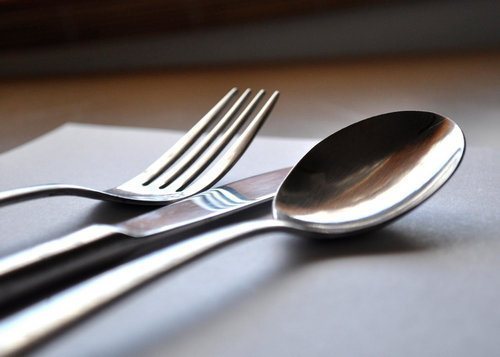
Ammonia also fights dark stains on cupronickel. Its aqueous solution of low concentration is used. The alcohol is diluted with warm water, the cutlery is washed in it and wiped dry with a towel or flannel. Don't forget to wear gloves!
How to clean nickel silver products in a decoction of eggshells? This is a labor-intensive method. Take the shells of three or four chicken eggs, depending on the number of utensils, finely crush them, fill them with water and put them on fire.When the water boils, put the cupronickel cutlery on the bottom of the pan and boil for 5-10 minutes. After that, take the cutlery out and wipe it with a towel.
Toothpaste copes well with dirt, but the cleaning procedure is complicated. Apply the paste to a damp piece of cotton wool and rub the surface of the cutlery. This requires physical strength and time, as well as accuracy so as not to damage or scratch the surface. In order not to injure the skin of your hands, wear gloves.
Garlic peel is considered a proven remedy. Cupronickel products are boiled in water with this peel. The longer the spoons and forks stand on the fire, the better the garlic will cope with cleaning. The amount of peel depends on the degree of contamination and the number of cutlery.
Useful tips
Cutlery made of this alloy cannot be cleaned with hard sponges and various abrasives (dry soda, tooth powder). The alloy surface will be cleaned, but scratches will appear on it. They are almost invisible after the first cleaning, but after two or three procedures, the products will lose their shine.
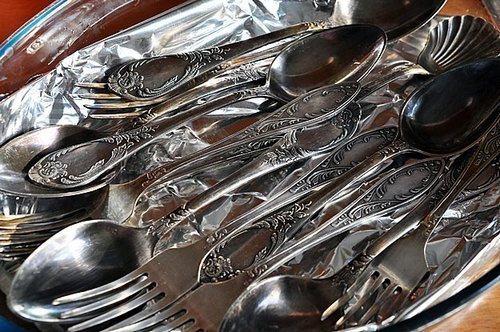
3 simple recipes for home remedies for cleaning stainless steel dishes from carbon deposits and grease
Careful handling is required for nickel silver products with blackening.When the water boils, cupronickel cutlery is placed at the bottom of the pan and boiled for 5-10 minutes. After this, the devices are removed and dried with a towel.
Toothpaste works well to remove stains, but the cleaning procedure is complicated. The paste is applied to a damp piece of cotton wool and rubbed onto the surface of the cutlery. This requires physical strength and time, as well as care to avoid damaging or scratching the surface. To avoid injuring the skin of your hands, wear gloves.



